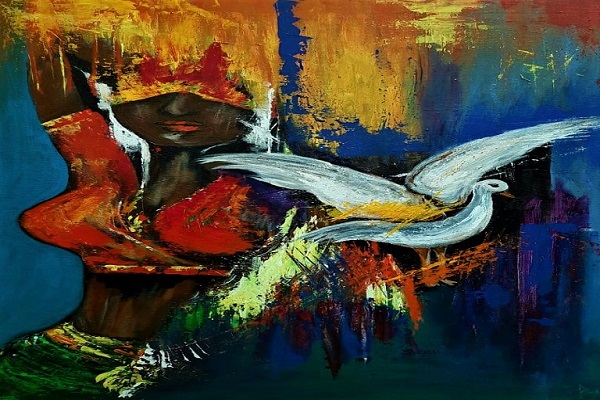The definition of “Indian art” and the emergence of a distinctive modernist movement both sparked by the country’s independence in 1947, have long been the subject of controversy in India. The country’s complex history of colonialism, decolonization, and division continues to be a source of critique and engagement for contemporary Indian contemporary artists.
Works frequently have as their foundations the legacies of creating nation-states, which are still felt today, and issues with representation. The politics of gender and religion, the disputed borders of the nation, the intricacies of secularism, and more general geopolitical objectives are all addressed by contemporary artists.
The lack of Indian contemporary artists’ foreign displays in no way represents reality. The vibrant art scene in India is expanding quickly, and the quality of Indian art will only get stronger. Along with the annual Indian Art Fair, a number of new galleries and exhibitions are opening up. The Museum of Art and Photography will debut in Bangalore. The Gujral Foundation is commissioning a series of public pavilions in Delh. The Kochi Biennale will hold its fifth edition this December. The Kiran Nadar Museum of Art is developing a new, upcoming institution.
It is difficult to condense this demanding and evolving Indian contemporary art scene into a list of 10 contemporary artists. This is merely a selection that highlights a variety of well-known and up-and-coming musicians, most of whom are situated in India. Each contemporary artist, who works in a variety of media including performance, installation, photography, painting, sculpture, fashion, and ceramics, has a unique aesthetic vocabulary that solidifies their place in the canon of contemporary art worldwide.
Along with this, there are various art for sale available with online art galleries.
Zarina Hashmi
Through minimalist monochrome prints, canvases, personal drawings, exquisite sculptures, and cast papers covered in layers of gold flake, Zarina seeks to express and capture a sense of home. With a background in Mathematics, she was formally known as Zarina Hashmi. She is one of the few female contemporary artists of her generation from India, along with, among others, M. F. Husain and Tyeb Mehta. At the 54th Venice Biennale in 2011, Zarina participated in India’s first-ever national pavilion.
Arina’s work is influenced by her experiences traveling and living as a minority Muslim in India after Partition. She uses a vocabulary of maps, abstract geometries, angular lines, and a subdued color palette to express exile and dislocation. Her minimalist pieces are filled with politics and emotion, and they go beyond the private to make references to cities around the globe that have seen the polarising effects of war, including New York, Baghdad, and Kabul.
Sheela Gowda
Sheela Gowda reacts to the surroundings. Her subject matter is the heady, boisterous ins and outs of daily life and works in Bangalore. She is most renowned for her enormous installations and sculptures that captivate their surroundings while utilizing elements common to the city, such as human hair talismans, cow dung, kumkum (red turmeric), incense, and tar drums.
Now, Gowda responds to the status of manual labor in the face of India’s social and economic change as well as its role in the creation of art by painstakingly using handcraft techniques. She frequently draws inspiration from impoverished and disenfranchised groups in India to produce breathtaking pieces like Behold (2009), which Tate Museum purchased in 2014. Four kilometers of knotted rope suspended from 20 automobile bumpers by tightly plaited human hair make up the artwork. It relates to the conflict between India’s ferocious desire for urbanization and the religious economy.
Nikhil Chopra
Nikhil Chopra is a prominent performer from India. Currently, he is a contemporary artist-in-residence at the Metropolitan Museum of Art, creates a wide variety of roles. Whether seeing the Met or traveling by foot from Athens to Kassel for Documenta 14 in 2017, Chopra’s approach includes meditative drawing. He involves his audience in his exploration of the complexity of colonialism and its aftereffects.
By adopting the character of Yog Raj Chitrakar, Chopra mixes autobiography. He started “Memory Drawings” in 2007. They are mixed with collective history and nostalgia. This roving, dapper figure has traveled through a variety of locales, including Mumbai, New York, and Oslo. Therefore, he creates large charcoal drawings on the length of the canvas. Therefore these frequently resemble tents in order to examine identity and tangled histories, access memories of landscape, and sketch.
Nalini Malani
The core oeuvre of Nalini is the idea of the boundaries being transcended. This relies on literature, mythology, history, and her own personal experience to produce art that has universal appeal. The artist juxtaposes tradition with modernist elements through drawings, paintings, projected animation, shadow play, video, and cinema to explore urgent themes relevant to contemporary society. As her family was impacted by the 1947 Partition, a subject close to Malani’s heart as evidenced by the 1998 film Remembering Toba Tek Singh, which was based on the short story of the same name by Sadat Hasan Manto.

